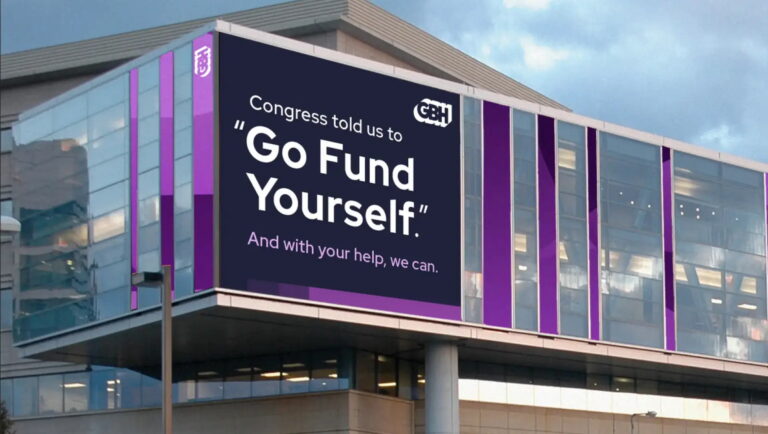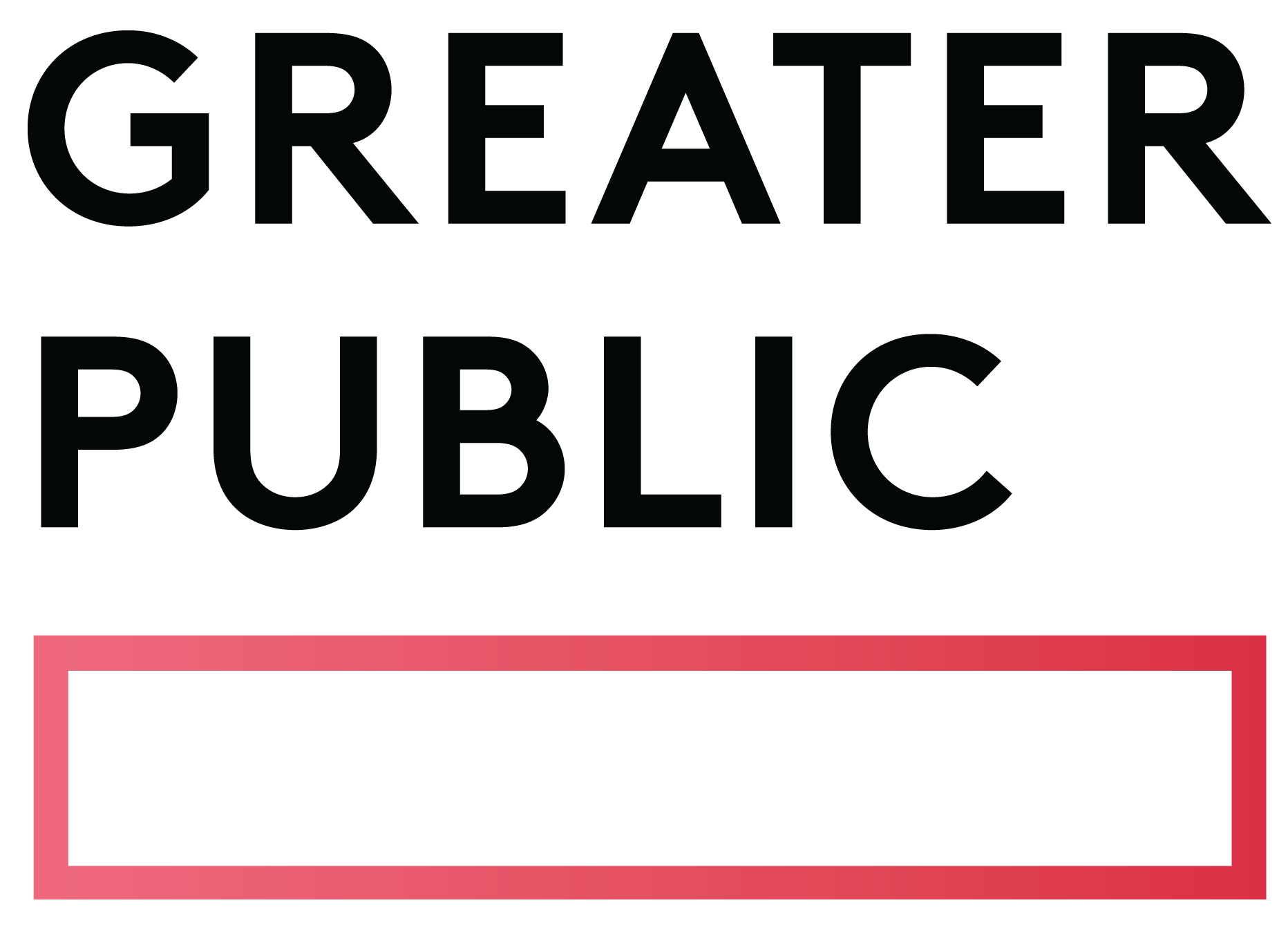Related Articles
Subscribe to the Greater Public newsletter to stay updated.
This site is protected by reCAPTCHA and the Google Privacy Policy and Terms of Service apply.


Image originally published as part of the GBH Fund the Future Campaign, in connection with the article: As public media’s federal funding officially ends, GBH CEO announces new fundraising campaign.
I’ve had the opportunity to speak with many colleagues over the last couple months, checking in post-rescission about how things are going. It’s been often inspiring, but also at times hard to sit together and come to terms with the unknown challenges ahead. Your colleagues are hopeful, tired, and resolute. We are all realizing that this moment requires a “Both/And” strategy: immediate action to stabilize our finances, and long-term transformation to secure our future. I wanted to spend some time reflecting back to you what we’ve been discussing and some ideas that might help guide your work in the coming weeks.
For most of our history we have touched on our relationship with government support with some distancing. If we’re honest, that relationship has been minimized to audiences so they understand how critical their support is to the equation. We need to advance that story without abandoning the one we’ve already told. Some are understandably unsure about how to change this narrative.
While federal funding was a small percentage of some budgets, every dollar is meaningful in a nonprofit media organization. Federal funding has had an outsized impact on our service, and we cannot absorb this annual loss without it affecting what we do. Your organization has likely shared what percentage of support comes from community support, government support, etc. Effective messaging for our new chapter must include the true significance of this loss. Explain the new math, transparently share with audiences how the funding mix has changed, and show your audiences how they become an even more essential pillar of support.
I asked our resident on-air messaging expert, Jay Clayton, what he’s learning about messaging the loss of federal funding from the fall drive cycle. He shared what’s effective right now:
“Outline the problem, let the listener know there is a solution,” Jay begins, “And we’re asking them to be part of that solution.
“We need to make it clear that all of our federal funding was eliminated and it’s been eliminated for the foreseeable future,” Jay emphasizes. “This affects us immediately and every year going forward. I don’t think it’s enough to say we’re ‘defunded,’ We need to be more specific.This is a permanent change not a short-term loss.”
The listener also needs to understand that the rescission of federal funding is connected to a bigger picture: Cutting this funding strikes at the heart of independent journalism and is part of a larger challenge for freedom of speech and the press.
“I think people want to know that we have a plan and they want a sense of what that plan is, without getting into the weeds about it,” Jay adds.
The core of that plan is simple: Since this loss is permanent, we need listeners to step up and become consistent monthly donors to provide the sustaining support left by the removal of federal funding – it’s all about ongoing support to counter an ongoing loss.
Jay suggests this messaging:
Congress eliminated all of our federal funding at the President’s request. Cutting this funding is part of a bigger challenge for freedom of speech and freedom of the press. Start a monthly contribution or add to your monthly contribution today to secure the future of this essential service.
Believe it or not, not all audience members – especially fringe listeners/viewers – know we’ve been defunded. And, while our community may generally know that defunding has happened, they may not have internalized that it happened. In some conversations I’ve had, stations have encountered donors who think only NPR and PBS were defunded. Or, in the case of music stations, listeners didn’t realize the station received any CPB funds.
We can all relate with the fact that the news is impossible to keep up with. We must keep explaining what has happened and what that means. Just like during other campaigns, we have to capture their attention and explain as we would with any other information we want listeners to internalize.
Having the rescission land in the middle of the summer found us scattered, traveling and taking much needed breaks. Now it’s critical to sit down with your team and think about what the priorities are. In my conversations with colleagues, this is where much of their energy is focused:
It makes sense that these four are getting so much energy. They are the most valuable practices we have to both plug the immediate funding gap and sustain us well into the future.
Additionally, we’ve long known that ongoing audience trends mean we have to change how we operate in order to stay relevant. The new funding reality means we may want to accelerate some of those shifts. This transformation isn’t a hard break between “old” and “new;” it’s a strategic crossfade where we aggressively improve our most valuable current practices while implementing strategic practices for the future.
In my conversations, the theme of “When we get to the New Year” or “In the New Year we will…” Comes up often. Now is the time to identify priorities for the next 6, 12 and 18 months. Fortunately, there is a map to guide us toward future growth, thanks to a key piece of research designed to help the system.
Last year, Greater Public, PMCC, SRG and our research partner City Square Associates conducted the Research of Unmet Needs Study. This comprehensive multi-station audience research project identifies the gaps and opportunities for growth in reach and engagement. What we learned has become even more critical and provides the strategic framework for the Long-Term Transformation we must now commit to: growing our community of audience members and supporters in a sustainable way.
For a sense of the work ahead, consider this data point from the findings: One in four participants in the RUN study appear to understand what public radio is, however, only one in 10 can correctly name a specific local station. This points to compelling and immediate opportunities in your market for engagement, live events, and enhanced local relevance that all stations have yet to tap into.
Another recommendation from the findings has stuck with me: “Lift up the community you serve. In news, cover local and global problems through a solutions lens and conveying information that people can use to make their lives better. In music, provide people the respite they seek from stressful lives and the joy they find in being connected with others through live local music experiences.”
We make our audiences’ lives better. But we need to prove it to them through our messaging. RUN found that “Hopefulness and information that aids self-improvement are the top unmet needs… but not seen as public radio strengths.” This is not a desire for candy-coated content, rather a unique opportunity for public radio and television to share more meaningful connections that serve as a catalyst for deeper relationships and positivity in our communities.
I want to thank everyone who has met with me this fall and shared candidly the wins, losses and sometimes the absurdity of this moment we’re in. The new normal of our industry is leading to new partnerships, renewed focus, and a shared, unflinching resolve to succeed. You are doing tremendous work. We look forward to helping you navigate it all.
I’ll be continuing to chat with folks in the coming weeks and months. If you want to schedule a session, please reach out! It would be wonderful to meet with you. Our entire Greater Public team works for you – and is happy to help and listen!
Special thanks to Jay Clayton and Ellen Guettler for contributing to this post.

View these related member resources and more with a Greater Public membership:
This site is protected by reCAPTCHA and the Google Privacy Policy and Terms of Service apply.
New to Greater Public? Create an account.
